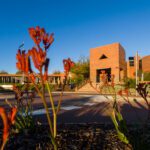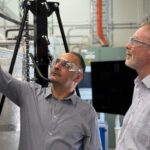Curtin University of Technology research suggests that corrosion may be costing the Australian economy more than $30 billion each year, much of which is preventable.
Curtin’s School of Civil and Mechanical Engineering Research Fellow, Dr Reza Javaherdashti, said that no industry or household was immune from corrosion.
“Almost all engineering materials, such as steel, plastics and concrete, are subjected to corrosion and degradation. This includes all vehicles, buildings and infrastructure,” he said.
Corrosion can result in terrible tragedies such as train derailments, oil spills, collapsed bridges, gas shortages and severe power outages.
“Estimates are that corrosion may have cost Australia up to $32 billion per annum,” he said. “That is more than $1,500 for every person in Australia each year.”
Western Australian Corrosion Research Group (WACRG) Director, Professor Rolf Gubner, said corrosion education was the key to saving $8 billion of avoidable corrosion damage each year.
“Most decision makers do not realise that corrosion is a significant problem,” he said.
“An appreciation of corrosion will, in many cases, provide opportunities for its threat to be removed during the design stages of a project, or a successful treatment program to be implemented.”
Professor Gubner said it was an important issue that government and industry needed to take seriously.
“The world has experienced one of the greatest economic crises in modern history. We need to be looking at everything we can to save money and improve efficiency.
“Timely, well-planned action on corrosion is one way that we can improve the efficiency of our economy.
“Besides saving money, doing this can also help prevent horrible accidents.”
WACRG is part of Curtin’s new $116 million Resources and Chemistry Precinct, which is a cluster of more than 200 research and teaching staff. This is one of the greatest concentrations of expertise in fields such as hydrometallurgy, water quality and treatment, nanotechnology, corrosion research, forensic science and biotechnology in the Southern Hemisphere.


